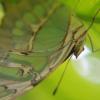
Edited by Phoenix, January 28 2018 - 5:37 AM.



Edited by Phoenix, January 28 2018 - 5:37 AM.
Colonies
Camponotus cf. albosparsus — Journal
I want to say Monomorium pharaonis, but 6 millimeters seems a little too big.
deleted
Edited by Martialis, January 28 2018 - 3:47 PM.
Trichomyrmex destructor.
All my colonies are dead.
Except:
Pogonomyrmex barbatus
Pheidole obscurithorax
Pheidole morens
Yup, these look like A. gracilipes.
But they have two petiolar nodes, which means they're not a formicine species like Anoplolepis.
Trichomyrmex destructor.
I agree. I was close, though.
Also, I know Monomorium destructor and Trichomyrmex destructor are just different names for the same ant, but which one is the most recent/correct name?
Trichomyrmex destructor.
Could be but it's not confirmed if they spread by nuptial flights also rather than the typical budding.
''This ant also spreads naturally from established colonies in two ways: colony budding, where queens walk on foot accompanied by workers to a new nesting site; and winged dispersal of inseminated queens to uninfested areas where they start a new colony. This latter mechanism needs to be confirmed; it is most likely colony budding is the primary natural dispersal method (Harris et al. 2005).''
Yup, these look like A. gracilipes.
But they have two petiolar nodes, which means they're not a formicine species like Anoplolepis.
Indeed. I meant M. pharaonis, but somehow that came out instead! ![]()
Yup, these look like A. gracilipes.
But they have two petiolar nodes, which means they're not a formicine species like Anoplolepis.
Indeed. I meant M. pharaonis, but somehow that came out instead!
oh.
0 members, 1 guests, 0 anonymous users